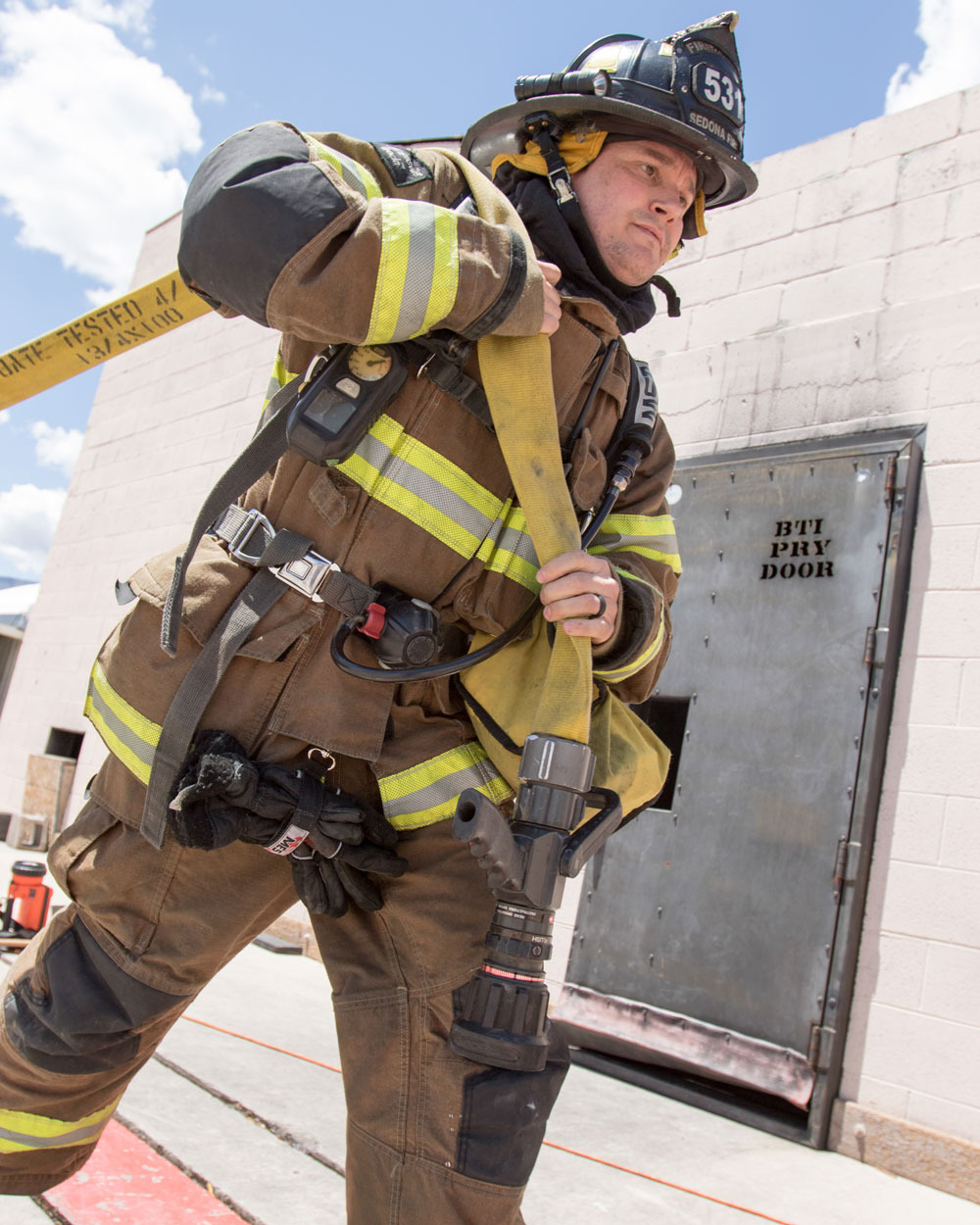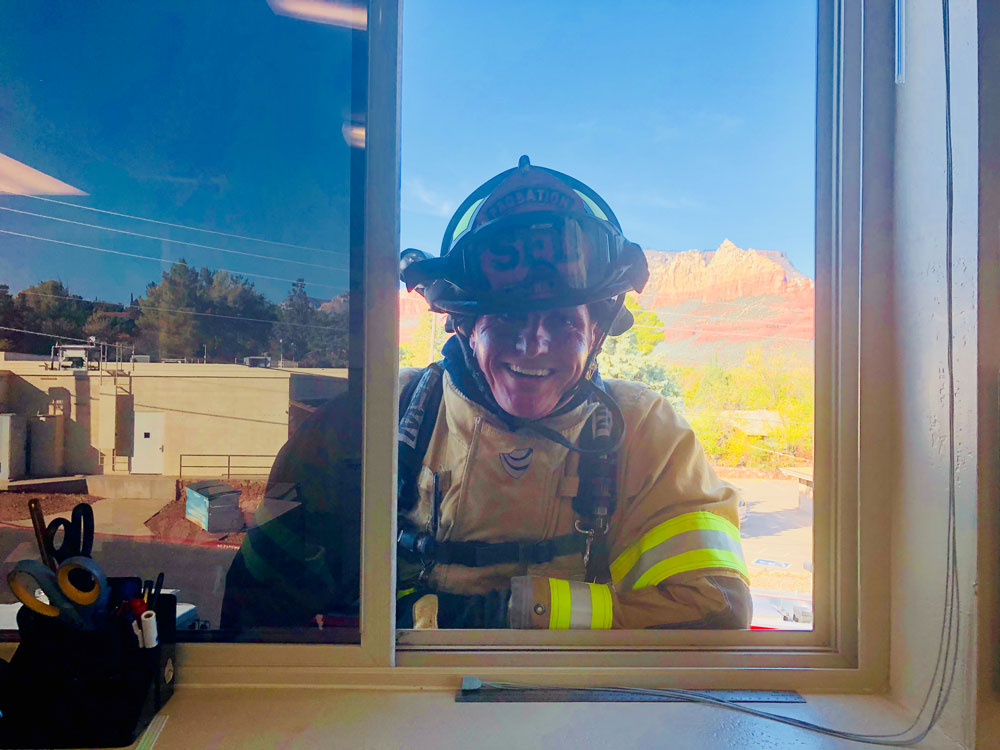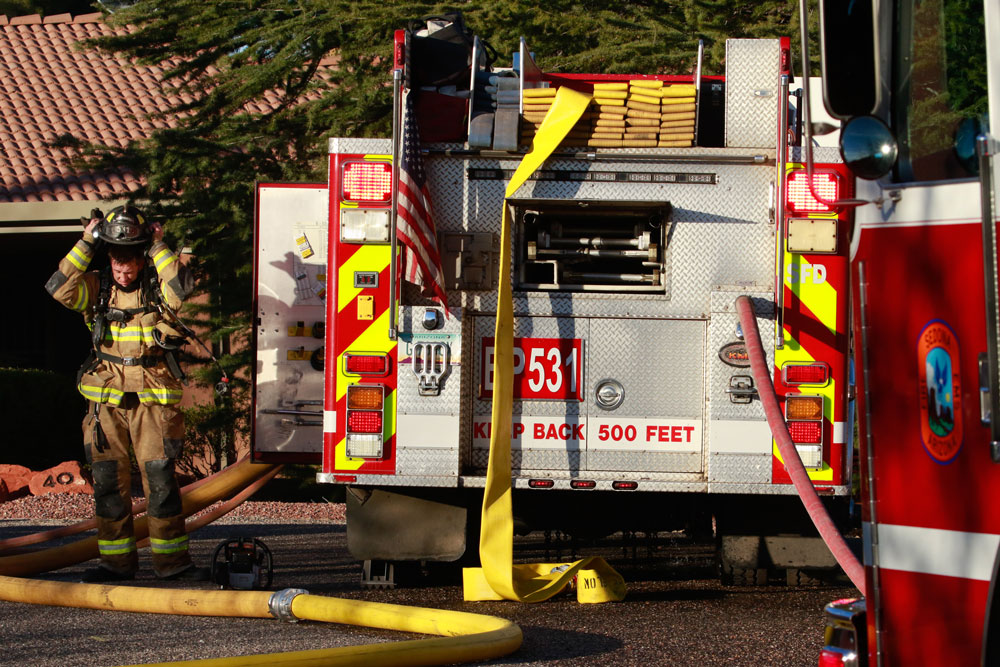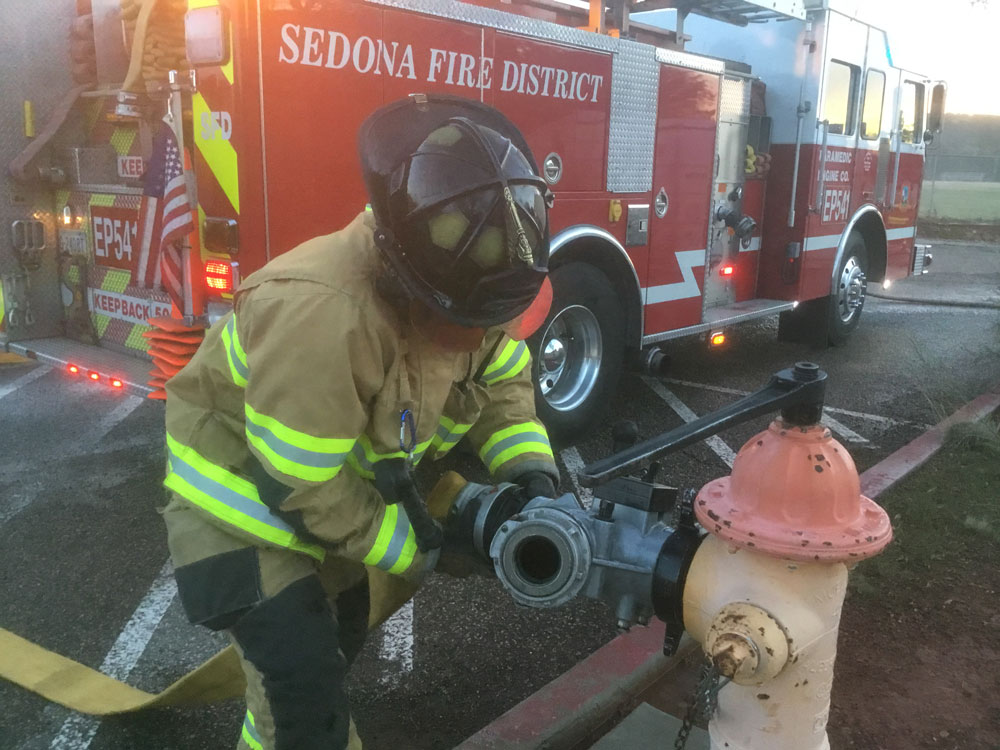Firefighters provide many services to the public and get their title from the most dangerous task they perform – fighting fires, or fire suppression.
Fire suppression falls into several categories, each with their own inherent challenges. SFD conducts continuous training on all types of fire suppression and rescue operations to be prepared for the variety of homes, businesses, and vehicles in the Sedona area.
Structure Fire
Structure fire, or a fire in a house, apartment, or business, is probably the most common example of fire suppression.
“Still” / Non-Structure Fire
The firefighting term for a non-structure fire or fire hazard is a Still Assignment, encompassing vehicle, dumpster, or fence line fires and gas leaks.
Advanced Training
SFD Firefighters undergo rigorous training to keep themselves, their team, and the community safe.










